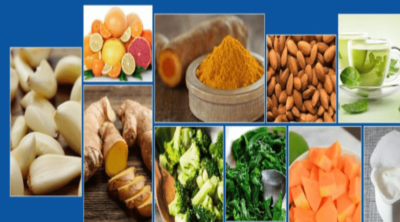
Although native to Eastern Europe and North Africa, durum wheat is now widely cultivated in North America and Australia. This NutriNeat article explains the exceptional qualities and health benefits of this wheat. Read further to know why this variety is good for pasta, and why it is not recommended for making bread.
Did you know?
Approximately 75% of grain products used in the U.S. are made from wheat. Not only Italians but Americans love pasta too. The annual sale of pasta in American grocery stores in 2000 was 1.3 million pounds. If you use 1.3 million pounds of spaghetti to form a line, that’s sufficient enough to make almost 9 rotations around the Earth’s equator.
The Latin word durum means “hard”. In Italy, durum wheat, which is the firmest of all varieties, is exclusively used to make pasta since thousands of years. The scientific name of this wheat is Triticum durum. It is a member of the tetraploid family and is also known as macaroni wheat. Its amber-colored kernels are larger than those of other wheat types.
These days, it is commercially grown in other continents to fulfill the ever-increasing demand of pasta makers. Its high protein content makes it unique among all varieties. Its hardness or exceptional strength makes it good for pasta.
Pasta
Other types of wheat when milled give a fine flour, because the endosperm of the wheat kernel is usually so soft that it is easily broken down into a powdery flour. But in case of durum, the endosperm is so hard that you get a granular product called semolina. Moreover, it is low in gluten. As the dough is less elastic, one can easily roll it into pasta shapes. Another unique characteristic of this grain is that the endosperm is yellow, and not creamy white. This is the reason behind the attractive yellow color of pasta and pasta products like spaghetti and macaroni.
Bread
Gluten in wheat is responsible for the formation of a glutinous web that makes a dough elastic. It helps the dough to rise so that the bread made from it becomes light and fluffy. Being low in gluten, it is difficult to make bread from durum flour. If you want to use it, you need to take a small portion of this flour and mix it with white flour. Or you may add isolated wheat gluten to the flour. Otherwise, the bread would be quite heavy or may break into pieces during the process of baking. In North Africa and Middle Eastern countries, it is used to make flat breads and thick loaves. In Italy too, certain types of breads are made from it.
Nutritional Facts
According to the USDA, here is a data chart revealing the calories, vitamins, and minerals packed in 100 g durum wheat.
| Value per 100 g | |
| Water | 10.94 g |
| Calories | 339 kcal |
| Protein | 13.68 g |
| Total lipid (fat) | 2.47 g |
| Carbohydrate | 71.13 g |
| Minerals | |
| Calcium | 34 mg |
| Iron | 3.52 mg |
| Magnesium | 144 mg |
| Phosphorus | 508 mg |
| Potassium | 431 mg |
| Sodium | 2 mg |
| Zinc | 4.16 mg |
| Vitamins | |
| Thiamin | 0.419 mg |
| Riboflavin | 0.121 mg |
| Niacin | 6.738 mg |
| Vitamin B6 | 0.419 mg |
| Folate | 43 µg |
| Lipids | |
| Total Saturated Fatty Acids | 0.454 g |
| Total Monounsaturated Fatty Acids | 0.344 g |
| Total Polyunsaturated Fatty Acids | 0.978 g |
| Cholesterol | 0 mg |
Health Benefits
✦ The nutrition data shows that durum wheat is high in mineral calcium that can strengthen your teeth and bones.
✦ It is loaded with other minerals like potassium, phosphorus, and magnesium, which are essential for proper functioning of organs. They keep your heart healthy and promote proper circulation of blood. They help maintain cardiovascular health.
✦ It is cholesterol-free. Moreover, it is rich in fiber that aids digestion and prevents abnormal rise in blood sugar levels. It is good for diabetics.
✦ It is very high in protein that is essential for synthesis and functioning of cells. Protein is required for strong muscles and high energy levels.
✦ Whole grain products are referred to as healthy food as they help maintain your weight within the normal range.
✦ Being a whole grain that is low in fat and high in protein, this wheat is always a healthier option for good-quality protein.
In Europe, durum flour is mainly used for pasta, pizza, and torte. In North Africa and Eastern Mediterranean regions, coarsely ground flour is used to make semolina that is used in couscous, soups, certain type of stuffing, pastries, puddings, kibbeh, tabbula, bulgur (cereal food), etc. Whatever way you use it, it will keep you healthy and satiated.




